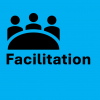Tip
Use a Meeting Cost Clock to visualize that meetings are not free. Seeing the cost grow with each second or minute can create a sense of urgency and discourage distracting conversations.
Description
We all know the saying “Time is Money”. When you get several people spending their time in your meeting the money spent on that meeting increases rapidly. Although we rarely consider the financial costs of our meetings, there are clear benefits to doing so:
- Raises awareness of resource use: Makes participants more conscious of the financial impact of meetings.
- Encourages efficiency: Attendees may stick closer to the agenda and avoid unnecessary tangents.
- Strengthens decision-making: Cost framing may push for quicker resolution instead of prolonging discussions.
- Improves accountability: Participants may self-regulate speaking time and relevance if they see the cost ticking up.
- Encourages alternative formats: Teams may shift non-essential discussions to async channels (email, chat, docs).
There are also some risks when meetings become primarily about the money they cost:
- May add stress: Constant awareness of cost could pressure participants, stifling creativity or open discussion.
- Risk of undervaluing collaboration: Not all benefits (trust-building, alignment, morale) have a clear monetary ROI.
- Could discourage participation: Some may speak less, fearing they’re “wasting money.”
- Focus on efficiency over effectiveness: Speed might be prioritized at the expense of quality decisions.
A Meeting Cost Clock can be a useful tool to visualize the costs of a meeting. You enter the number of attendees and an estimated average hourly rate of the attendees and the clock ticks up the costs until you stop it.

